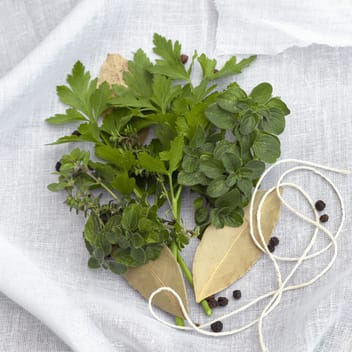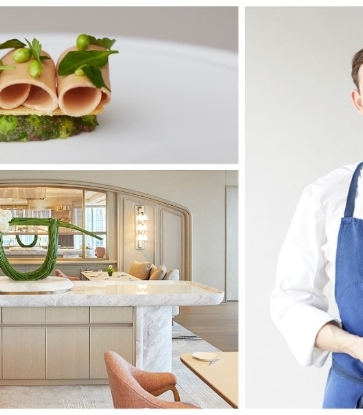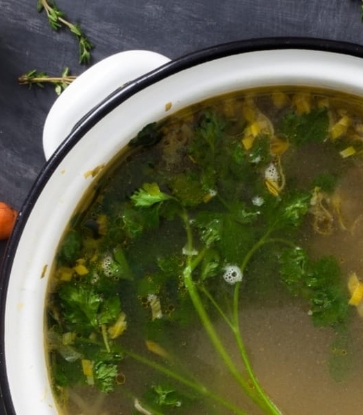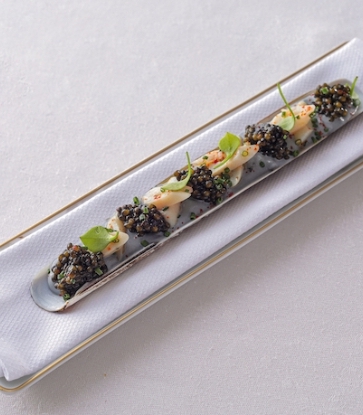French for “garnished bouquet”, a bouquet garni (pronounced boo-kay-gahr-nee) is a classic herb mixture used to make soups, stocks, sauces and stews. The herbs are bundled and tied then cooked together with the other ingredients, adding an herbaceous fragrance to whatever’s cooking. The beauty of a bouquet garni is the ease with which a cook can remove the wilted herbs before serving, without having to fish around in the pot.

Used in French Provencal cooking, a bouquet garni traditionally comprises a combination of fresh parsley, thyme and bay leaf, tied together with a bit of kitchen twine. The herbs can then be switched up to suit any particular dish:
- For the classic combination of fresh herbs favoured by French cooks, think 3-1-1: three sprigs of parsley with stems, a sprig of thyme and one bay leaf is enough to flavour about one litre of liquid.
- A stalk of celery or a leek top adds sweetness, while a slice of lemon peel or some fennel fronds enliven the pot. In Provence, it is not uncommon to add a slice or two of dried orange peel.
- Unexpected flavour notes can come from adding a stalk of lemongrass or nubs of ginger.
- Whole dry spices like peppercorns, juniper berries, star anise and cloves work well in rich braises.
- Herbs used in traditional Chinese medicine such as liquorice root, honey dates and ginseng may also be used in an unconventional bouquet garni, like in this recipe for Asian Beef Bourguignon.
A blend of two or three herbs is usually enough to add balanced flavour to stocks and light soups, though richer long-simmered stews could benefit from up to five herbs and spices.
Bundling Methods
Long-stemmed fresh herbs can be tied together easily with a length of kitchen twine — just be sure to tie them tightly as fresh herbs shrink after cooking. Tying the other end of the twine to the pot handle makes the bouquet garni even easier to fish out at the end of cooking.

Alternatively, a square of gauzy cheesecloth or muslin gathered up at the corners and tied off at the top makes a handy pouch for loose whole spices like peppercorns and cloves. A coffee filter or tea strainer would work in a pinch as well.
Try adding a bouquet garni to any basic stock recipe for a pop of flavour or make store-bought stock your own by infusing a unique combination of herbs.
RECOMMENDED READING: Kitchen Language: What Is A Quenelle?



















